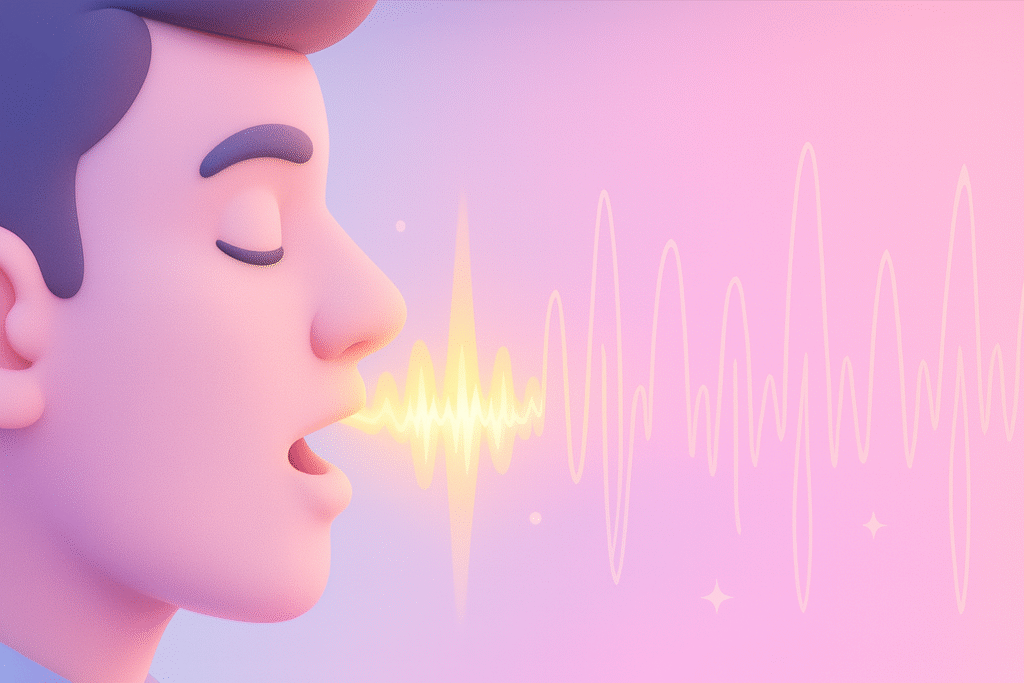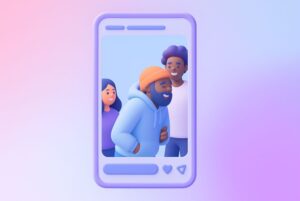Imagine this: you’ve just launched a new video campaign. The visuals are crisp, the story compelling, and the music catchy.
But something feels… off.
The generic voiceover doesn’t capture your brand’s personality. Your viewers don’t feel seen or spoken to. They watch for a few seconds, then scroll away.
Now picture the same video, but this time, the narration sounds like a trusted brand ambassador, or even like the customer’s favorite influencer. Suddenly, the message resonates. It feels personal, authentic, and memorable.
This is the power of the AI voice clone, a technology that’s reshaping video marketing by enabling brands to scale personalization like never before.
What Is AI Voice Cloning?
An AI voice clone is an artificial intelligence–powered model that learns and replicates a human voice.
Using advanced machine learning, neural networks, and natural language processing, it analyses speech patterns, tone, and cadence, then generates lifelike audio that’s nearly indistinguishable from the original speaker.
Unlike robotic text-to-speech systems of the past, modern AI voice clones sound natural and can be tailored for different moods, languages, and contexts.
Think of it as giving your brand a voice engine, one that can narrate hundreds of videos, each customized to fit the listener and platforms. AI tools like VidAU make this easy to create
Why AI Voice Clones Matter in Marketing
Video is now the most powerful content format in digital marketing. Studies show that 91% of businesses use video as a marketing tool, and personalized videos can increase engagement by up to 80%.
But traditional voiceovers have limitations:
- They’re expensive to scale.
- Recording sessions are time-consuming.
- It’s hard to maintain consistency across campaigns.
This is where AI voice cloning changes the game. It allows brands to:
- Personalize at scale: Create localized ads or product walkthroughs in multiple voices and languages.
- Reduce costs: No need to book repeated studio sessions.
- Move faster: Generate hundreds of unique, branded voiceovers instantly.
- Maintain consistency: The same cloned voice can power every video in your library.
In short, AI voice clones bridge the gap between personalization and scalability.
Real-World Examples of AI Voice Clones in Action
E-commerce Brands
Imagine a global fashion brand launching seasonal collections. Instead of hiring dozens of narrators, they deploy an AI voice clone trained on their brand ambassador’s voice. Each region gets the same ad in its local language, but with the same recognizable tone.
Gaming & Entertainment
Video game developers use cloned voices to create immersive NPC dialogue. Fans hear characters speak in realistic, dynamic ways without requiring endless recording sessions.
Education & Training
EdTech companies deploy AI voice clones to make learning more engaging. A single instructor’s cloned voice can narrate thousands of lessons, quizzes, and microlearning videos without fatigue.
Influencer Campaigns
Influencers scale their presence by licensing their voice clones. Instead of recording dozens of personalized shoutouts or branded ads, they let AI voice cloning deliver the message, while keeping the personal touch.
How AI Voice Clones Compare to Traditional Voiceovers
| Feature | Traditional Voiceovers | AI Voice Clone |
| Cost | High (studio + talent fees) | Low, scalable |
| Turnaround Time | Days to weeks | Minutes |
| Consistency | Varies per session | 100% consistent |
| Personalization | Limited | Mass personalization possible |
| Languages/Dialects | Requires multiple actors | AI can translate & adapt |
AI voice clones don’t replace human creativity; they augment it. Brands can focus on storytelling while AI handles scalable, authentic narration.
Ethical Considerations of AI Voice Cloning
Like any powerful tool, AI voice cloning comes with responsibility. Brands must consider:
- Consent: A person’s voice should never be cloned without explicit permission.
- Transparency: Disclose when AI-generated voices are used.
- Security: Protect cloned voice data from misuse.
- Authenticity: Use cloned voices to enhance brand identity, not mislead customers.
When applied responsibly, AI voice clones enhance trust rather than erode it.
How to Get Started with AI Voice Clones
Choose Your Voice Model
Decide whether to create a custom clone of your brand ambassador or select from pre-built AI voices.
Train the Clone
Upload voice samples (usually 30–60 minutes of recorded speech) to train the AI. The more data, the more natural the clone.
Customize Output
Adjust pitch, tone, speed, and emotion. Want a warm, conversational tone for social media? Or a formal one for corporate training? AI lets you fine-tune.
Integrate in Videos
Export your cloned audio and sync it with video marketing assets, ads, tutorials, explainers, or customer success stories.
Tools like AI Voice Generators make this seamless, giving marketers an instant way to scale production.
AI Voice Cloning: The future is personalization at scale.
Imagine video ads that not only feature your favorite brand but also speak to you by name in your local dialect.
Upcoming innovations may include:
- Hyper-personalised ads: Dynamic voiceovers tailored per customer.
- Cross-platform integration: The same AI voice across video, podcasts, and even chatbots.
- Real-time cloning: Live events where AI narrates in cloned voices simultaneously in multiple languages.
For marketers, the message is clear: AI voice clones are not a fad, they’re the future.
How to Integrate AI Voice Clones Into Your Marketing Strategy
Adopting AI voice clones isn’t just about having the tech; it’s about weaving it into your broader marketing workflow. Here are some steps to help businesses and creators get started:
1. Identify Use Cases
Think about where voice has the biggest impact. Product demos, customer onboarding, YouTube ads, or personalized thank-you videos are excellent starting points.
2. Start With a Pilot Project
Choose one campaign and test AI voice cloning. For example, clone your brand ambassador’s voice for a single product ad and compare engagement against traditional narration.
3. Combine With AI Video Tools
Voice cloning is powerful when paired with AI video generation, caption AI, or avatar tools. This creates a full-stack AI production pipeline, fast, affordable, and scalable.
4. Localize for Global Reach
Use cloned voices to break into new markets. Instead of subtitling, create fully voiced ads in Spanish, French, or Hindi while maintaining the same brand tone.
5. Measure ROI
Track performance:
- Engagement rates on personalized ads
- Conversion lift in localized campaigns
- Cost and time saved compared to traditional production
6. Scale Gradually
Once confident, expand to more voices, languages, and campaign types. The goal isn’t to replace human creativity, but to amplify it at scale.
Conclusion: Your Voice, Amplified
Video marketing is no longer about just visuals. The voice that tells your story is just as critical. With an AI voice clone, marketers can deliver authentic, personalized, and scalable experiences that resonate with audiences worldwide.
The best part? It’s not science fiction anymore; it’s happening now. And the brands that adopt early will stand out in a crowded digital landscape.
FAQs About AI Voice Clones
1. What is an AI voice clone?
It’s a digital replica of a human voice, created using AI to sound natural and authentic.
2. Are AI voice clones legal?
Yes, when consent and licensing are properly handled.
3. Can AI voice clones replace actors?
Not entirely. They supplement talent by handling repetitive, scalable tasks.
4. Do AI voice clones work in multiple languages?
Yes, modern AI tools support 40+ languages with high accuracy.
5. How expensive is it to create a clone?
Costs vary, but it’s significantly cheaper than repeated studio recordings.









